Over four decades ago, scientists made the groundbreaking discovery that Pluto has a companion named Charon. Together, they create an extraordinary celestial phenomenon – a binary dwarf planet system. Considering the etymology of their names and the unique characteristics of their surfaces, these two celestial bodies could be likened to the underworld, the domain of the deceased within our solar system.
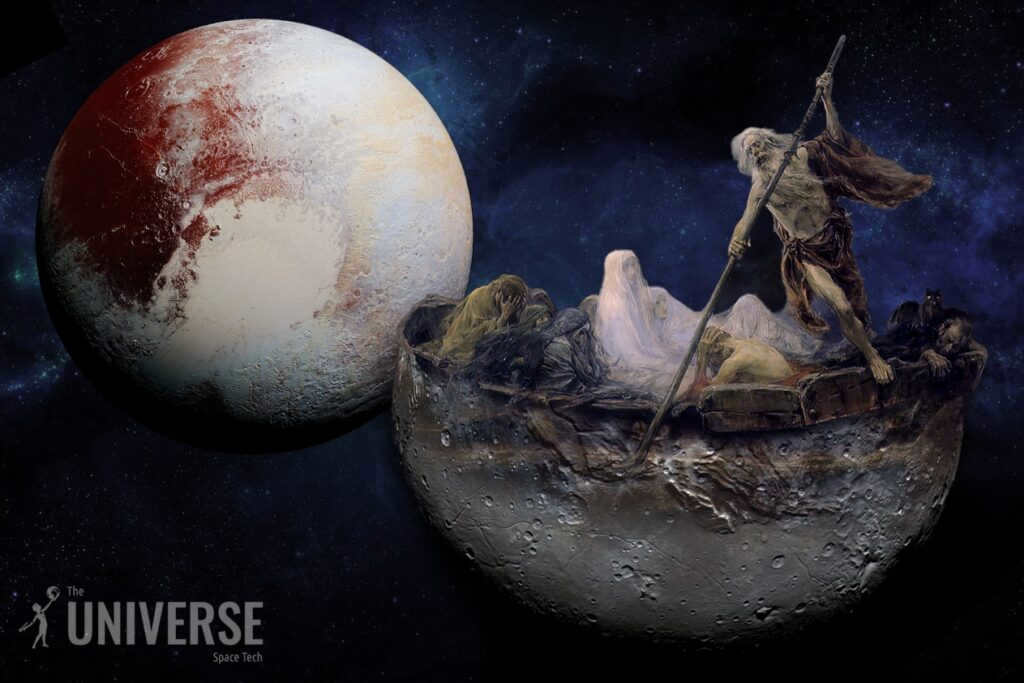
The discovery of Charon
Ever since its detection in 1930, Pluto has perplexed scientists with its peculiarities. Initially, it was revealed that it revolves in an elongated and highly inclined orbit compared to the ecliptic, occasionally even coming closer to the Sun than Neptune. Subsequently, it became evident that the size of this celestial body is comparable to that of the Moon, indicating its significant deviation from the “giant planets”.

However, on June 22, 1978, scientists made a realization that they had previously overlooked the most intriguing aspect of Pluto. On that day, the American astronomer James Christie made a groundbreaking discovery that the photos of the dwarf planet sometimes displayed a slight elongation, and this elongation would appear and disappear in a cyclical pattern of approximately one week. Christie concluded that this phenomenon was attributed to the presence of the Plutonian satellite.
Initially, Christy had a desire to give this satellite a name to honor his wife Sharon. However, he soon realized that the International Astronomical Union would not permit such a choice. Therefore, he embarked on a search for alternative names that were connected to the god of the underworld, Pluto. Eventually, he settled on Charon, a figure from ancient mythology who was responsible for ferrying the souls of the deceased across the river Styx.

The option to name the celestial body “Charon” was liked by everyone because it sounded very similar to “Sharon”. This name later became the official name of the celestial body.
Classification as a Double Planet
Charon surprised scientists right from the start. Christie discovered that Charon orbits around Pluto with a period of 6.387 days, and more recent studies have revealed that its orbit has a radius of about 19,600 km, which is nearly 20 times smaller than the average distance between the Moon and the Earth.
Furthermore, scientists later discovered that Charon has a diameter of 1,212 kilometers, which is only half the size of Pluto. No other planet and its satellite in the solar system have such a significant difference in size and distance. However, as researchers have found in the 21st century, this characteristic is common among many objects in the Kuiper belt.
In the early 2000s, astronomers were grappling with the question of how to classify Erida and a group of other sizable objects found in the outer region of Neptune’s orbit. One proposal was to designate them all as planets. However, a different concept gained traction: the introduction of a new category known as dwarf planets. Charon, while still officially considered a moon of Pluto, was recognized as part of this fascinating binary system, with the possibility of revisiting its planetary status in the future.
Frigid Inferno
Prior to 2015, the prevailing understanding among scientists regarding the Pluto-Charon binary system was that it was an icy inferno. While one might typically associate hell with scorching heat, this is not universally true across all mythologies. Take, for instance, the chilling realm of Helheim in Norse mythology.
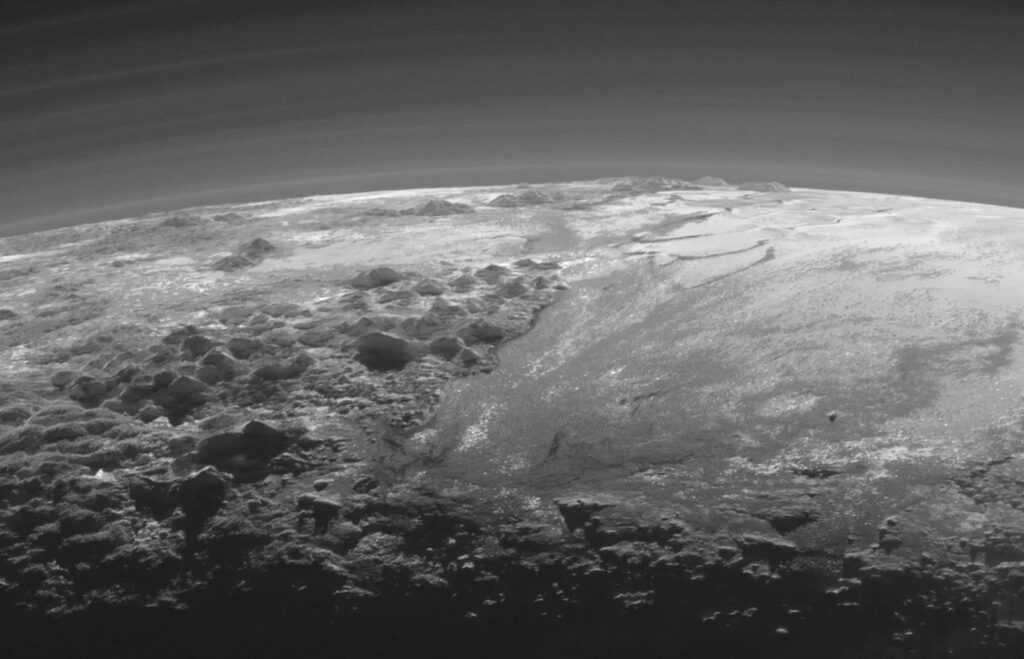

The temperature on the surface of both celestial bodies measures only 40-60 K, equivalent to -233 to -213 degrees Celsius. In such extreme conditions, not only water and air, but also the majority of gases transform into a solid state. Therefore, it comes as no surprise that when the New Horizons spacecraft passed by the Pluto-Charon system in 2015, it discovered an assortment of ice formations on their surfaces, including nitrogen, methane, water, and frozen carbon monoxide.
All of these gases slowly sublimate, creating scarcely visible dual atmospheres that quickly dissipate into outer space due to the weak gravitational force. Consequently, the conditions there are far from hospitable.
One defining feature of the underworld in any mythological tradition is its darkness, and this holds true for Pluto and Charon. In the dual system, the Sun appears approximately 1600 times dimmer to observers compared to Earth. Even though its illumination is still 250 times brighter than a full moon on a lunar night, perpetual twilight reigns on Charon.
“Pluto’s Dark Locations”
Over the past 45 years, scientists have made fascinating discoveries within the double system since the identification of Charon. Numerous locations within this system have been named after the realm of the deceased or infamous places from various cultures.
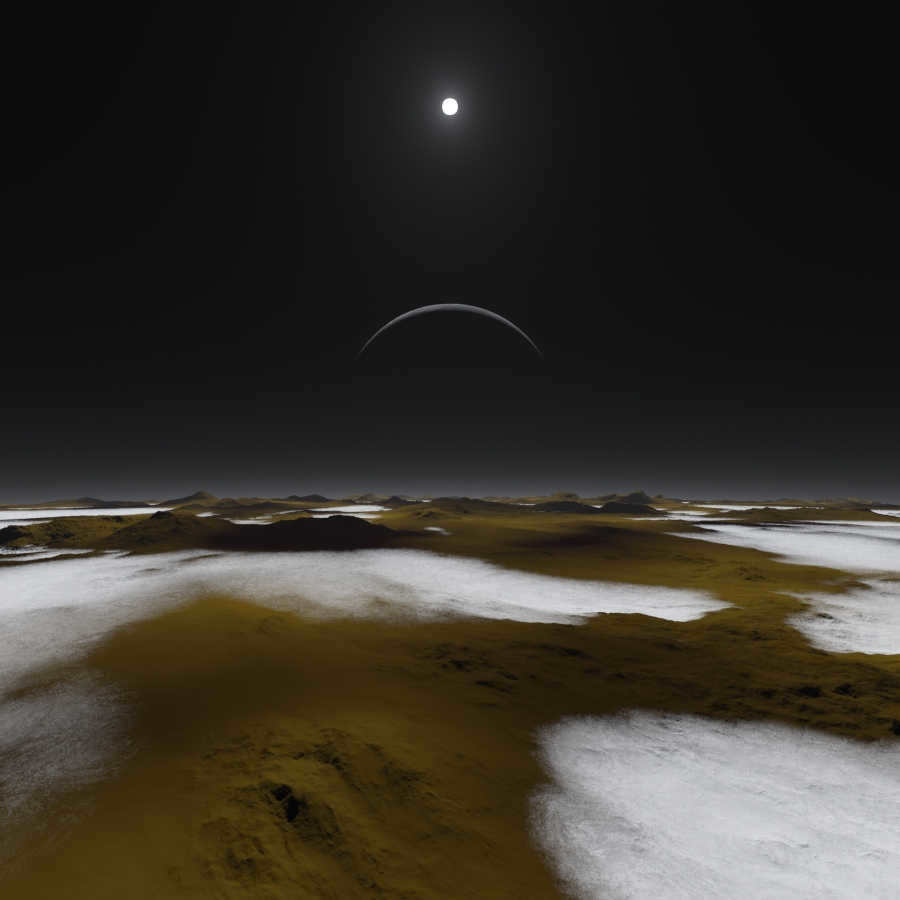
For instance, two out of the four small satellites of the dwarf planet, discovered in the new millennium, were given names connected to the realm of Greek mythology. The initial one was dubbed Styx – as a tribute to the river that Charon used to ferry the deceased. The second one was named Cerberus, honoring the fearsome three-headed dog with a serpent tail, who, according to legends, guarded the entrance to the underworld.
On Pluto itself, there are numerous objects linked to this theme. A case in point is the Pandemonium and Tartarus rock formations. The former was named after the capital of hell in John Milton’s poem “Paradise Lost,” while the latter pays homage to the abyss beneath the ancient realm of the dead. It was in Tartarus where the Olympian gods imprisoned their adversaries, the Titans.
The fluktus on Pluto, which are unique relief forms resulting from the eruption of liquid from its depths, were named after various heroic figures from myths and legends. These include Dionysus, the Greek god known for his wild adventures; Xanthus, the loyal slave who accompanied him on his journeys; Mpobe, a legendary African character; and Père Portier, a character from a French poem who willingly ventured into the depths of hell. These names pay tribute to the bravery and courage of these individuals.
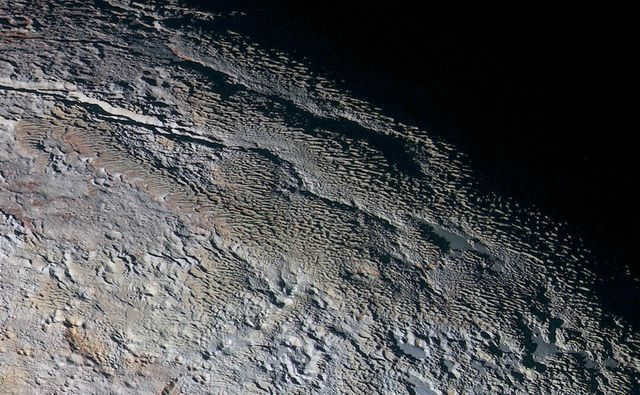
Pluto is known for its long, low valleys, which have been named after famous characters associated with the underworld. Among these are Garmond, the son of Odin, and his horse Sleipnir, who ventured into Helheim to rescue his brother Baldr. Additionally, the valleys also bear the names of Sun Wukong, the monkey king from Chinese mythology, as well as Virgil and Beatrice, who guided Dante through the circles of hell in his epic poem.
Additionally, Pluto possesses enigmatic dark areas known as maculae. These maculae derive their names from malevolent deities and creatures found in ancient mythologies and literary creations. For instance, one of these maculae bears the moniker Morgoth, after the wicked spirit from J.R.R. Tolkien’s fictional realm of Middle-earth, while another is named Balrog, after the fiery entity that served him. Another dark spot is referred to as Cthulhu, in tribute to Howard Lovecraft’s fictionalized ominous deity that blends human, octopus, and reptilian characteristics.
A group of scientists collaborating with the New Horizons probe have proposed that objects on the surface of Charon should be named after science fiction themes or their authors. The International Astronomical Union has given partial support to this suggestion, resulting in some of the names created by the scientists being officially recognized while others remain unrecognized.
Unsurprisingly, the “infernal theme” has made its way into the naming process as well. One notable feature on Charon’s surface is a large dark spot located in its northern hemisphere. This spot is the result of organic matter deposition at extremely low temperatures, resembling a massive macula. It has been designated as Mordor, a name derived from John Tolkien’s fictional universe to describe a desolate plain inhabited by orcs.
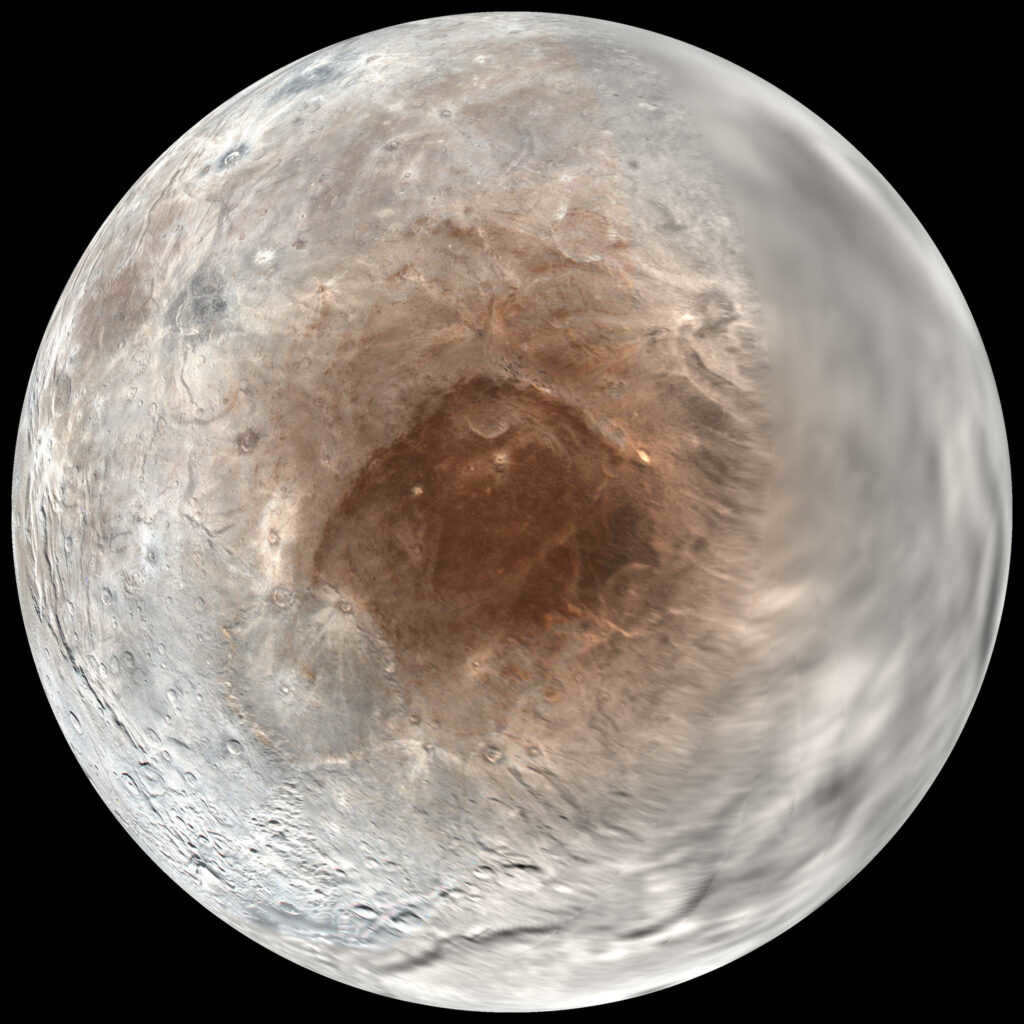
The vast icy highland on Charon has been designated as Oz, in homage to the enchanting realm found in the works of Frank Baum. Furthermore, the largest crater has been aptly named Dorothy, after the young girl who was spirited away to that very land by means of a magical whirlwind.
In recognition of their remarkable contributions to the realm of fantasy literature, four esteemed authors have been granted the privilege of having their names associated with Charon: Arthur C. Clarke, Octavia Butler, Anne Mckefrey, and director Arthur C. Clarke (although it should be noted that they were not named after the aforementioned individuals, but rather their namesakes). Additionally, a multitude of craters and other distinctive features on Charon have been christened with monikers inspired by various characters from literary works, such as Luke Skywalker, Hodja Nasreddin, James Kirk, Ellen Ripley, and even Alice, who famously journeyed through Wonderland and the Looking Glass.
Get all the latest and most fascinating news and facts in our Telegram channel!

I have been involved in the field of news editing and article writing for the past decade, focusing on promoting scientific knowledge in the Ukrainian language. With a PhD in engineering and a background in teaching civil engineers, I have expanded my scope in recent years to communicate scientific concepts to the wider public. One area of particular fascination for me is space exploration. Throughout my work, I strive to pay homage to the dedicated scientists behind groundbreaking discoveries and the brilliant engineers who have constructed innovative space technologies.
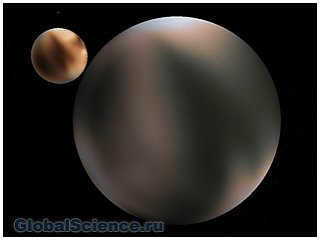
The New Horizons spacecraft is steadily making its way to the outer edge of our Solar System, and a target in the Kepler Belt is becoming more visible and accessible. Thanks to the LORRI camera, we now have clear images showing that Pluto and its satellite Charon, which are separated by a distance of eighteen thousand kilometers, are engaged in a synchronized orbital dance.
What makes these images truly unique is that they were captured by a camera that approached the objects at an incredibly close distance, less than ten times the distance between Earth and Pluto.
Scientists have been able to observe a full orbit of the satellite around Pluto through images captured by the telescope over a period of five days. The satellite’s mass is just 12% of Pluto’s mass, but it has the strongest gravitational influence on the planet. This is evident in the images, which clearly show the planet’s wobble caused by the satellite’s gravitational pull. Similarly, the satellite is also affected by Pluto’s gravitational pull, causing both objects to rotate around a common point known as the barycenter. The barycenter represents the center of gravity for the Pluto-Haron system.
The situation is unique among planets in the Solar System, unlike asteroids, which have external objects like barycenters. Thus, according to scientists, there are two possible solutions: either categorize this system as a binary system or recognize Charon as an independent planet. This is especially important since a few years ago it was discovered that the other four satellites of Pluto do not revolve around Pluto itself, but around the system’s center of gravity.
In order to make a final decision, additional research needs to be conducted by the international organization responsible for classifying celestial objects. It is likely that the Astronomical International Union will carry out this research next year, once they have obtained new close-range images.
Upon reading this material:
The solar system’s largest dwarf: Pluto
The NASA website has announced that Pluto, a dwarf planet, is the largest of its kind in the entire solar system. This conclusion is supported by data gathered by the New Horizons Automated Interplanetary Station through the use of the LORRI instrument. Based on their research, Pluto’s size is actually much greater than previously believed. Scientists have determined the exact dimensions of this dwarf planet, revealing that it has a diameter of 2,370 kilometers.

Scientists from NASA, the American space agency, have captured a series of photographs showcasing the surface of the minuscule star Pluto alongside its natural satellite, Charon. These images, taken using NASA’s New Horizon equipment, were unveiled during a press conference. The remarkable visuals offer a clear view of Pluto’s terrain, featuring a towering mountain range measuring a staggering three and a half thousand meters. In addition to this groundbreaking discovery, NASA experts have successfully determined the age of this celestial body.
The Horizons spacecraft is scheduled to come close to the celestial body known as Pluto

Based on reports from American space scientists, it has been revealed that the Horizons probe is set to make a close encounter with the celestial body known as Pluto. This historic event is scheduled to occur tonight, specifically on the 14th of July. NASA experts have indicated that the probe will be positioned at a distance of twelve thousand kilometers from this enigmatic dwarf planet. The primary objective of this mission is to gather valuable data and gain a deeper understanding of this celestial body.
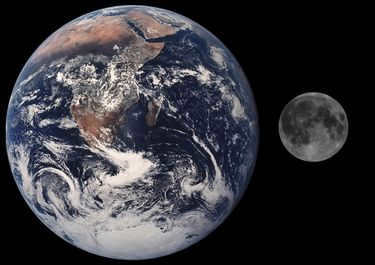
A binary system is a term used in the field of astronomy to refer to a celestial system that consists of two astronomical objects, both of which meet the criteria to be classified as planets and possess enough mass to have a gravitational influence that surpasses that of the star they orbit.
As of 2010, there are currently no officially recognized systems within the solar system that meet the criteria to be classified as a “binary system”. One unofficial requirement is that both planets must orbit around a shared center of mass, also known as the barycenter, which must be located above the surface of these planets.
There are also asteroids that come in pairs, like (90) Antipope and the Kuiper Belt objects that have two components, as well as asteroids that have both Anglo-American names, such as (79360) 1997 CS29 and English. 1998 WW31. The European Space Agency has suggested considering the Earth-Moon system as a binary planet [1]. In August 2006, a proposal to reclassify Pluto and Charon as a binary planet was discussed at the XXVI General Assembly of the International Astronomical Union. However, no further action was taken on the matter [2].
Definition of a dual planet
There has been a recent discussion about how to classify a dual planet and how to classify a planet and its companion system. In most cases, this is not an issue because the satellite is significantly smaller in mass compared to the planet it orbits. With the exception of the Earth-Moon and Pluto-Charon systems, all satellites in the solar system have masses that are less than 0.00025 (1/4000) of the planet’s mass. However, the Moon’s mass is about 0.01230 (≈ 1/81) of the Earth’s mass, and Charon’s mass is about 0.117 (≈ 1/9) of Pluto’s mass.
There is a belief that the distinction between a binary planet and a planet-moon system is determined by the position of the system’s center of mass. If the center of mass is not situated beneath the surface of either object, then the system can be classified as a binary planet. In such a case, both bodies orbit around a point in space between them. In accordance with this definition, Pluto and Charon are binary dwarf planets, while the Earth and Moon form a planet-moon system. Due to the gravitational forces exerted on the Moon, it is gradually moving away from the Earth at a rate of 3.74 cm per year, resulting in an increasing distance between the two. As a result, the center of mass, presently located beneath the Earth’s surface, will eventually shift to be above the surface of our planet. Consequently, according to this definition, in billions of years, the Earth-Moon system could be classified as a binary planet [3]. In 2006, the International Astronomical Union contemplated a definition whereby Pluto and Charon would be recognized as a binary planet, but ultimately, it was not adopted.
If we use the definition of a double star system and consider the location of the barycenter, any celestial body that orbits a star would be classified as a planet if the center of mass of the system is below the star’s surface. Conversely, if the center of mass is above the star’s surface, the body would be considered a star. Based on this criterion, all the planets in our solar system, with one exception, would be classified as planets: Jupiter is so massive that the center of mass it shares with the Sun is above the Sun’s surface. However, since Jupiter is not a star, astronomers face challenges when it comes to scientifically identifying it as a double planet.
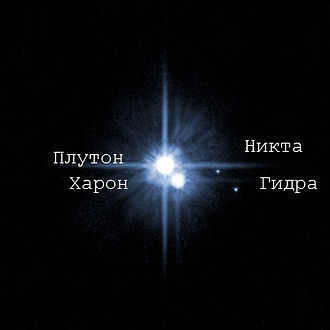
As stated earlier, the Pluto-Charon system meets the criteria for being classified as a binary planet. Currently, they are the sole celestial bodies in our solar system that hold this distinction.
From the time of Pluto’s discovery in 1930 until 1978, Pluto and Charon were considered to be a single celestial entity. However, in 1978, astronomer James Christie, while examining photographs of Pluto, noticed a protrusion on its surface. Further investigation revealed that this protrusion exhibited a regular pattern, leading scientists to hypothesize the existence of a physical entity causing this phenomenon. The first separate images of Pluto and Charon were captured by the Hubble Space Telescope in 1990, and they can now even be observed from Earth using modern telescopes.
The separation between Pluto and Charon measures approximately 19,570 kilometers (to put it in perspective – the average distance between Earth and the Moon is about 384,400 kilometers). Pluto’s diameter is 2,390 kilometers, while Charon’s diameter is 1,212±16 kilometers [4]. These statistics demonstrate that Pluto and Charon are similar in size. Another compelling argument for classifying the Pluto-Charon system as a binary planet is that the system’s center of mass is located outside of Pluto, the larger celestial body.
As per the draft Resolution 5 of the XXVI IAU General Assembly (2006), it was proposed that Charon be designated as a planet. The accompanying notes to the draft resolution stated that if this were to happen, Pluto-Charon would then be recognized as a double planet [5]. This suggestion was based on the fact that both objects could be considered as dwarf planets and that their common center of mass is located in empty space [6]. However, during the same assembly, the IAU introduced the definitions of “Planet” and “Dwarf Planet”. According to these definitions, Pluto is classified as a dwarf planet and Charon as its satellite, although this decision may be subject to revision in the future [7].
Dual planets in science fiction
- Romulus and Remus (Star Trek)
- New Washington and Franklin (Jerry Purnell, “Prince”)
- Opal and Tecton (Charles Sheffield, “Summer Tide”)
- Urras and Anarres (Ursula Le Guin, “The Dispossessed”).
- Genji and Chujo (English.Murasaki)
- Caprica and Gemenon.
- Fire and Water (Lexx)
Notes
- ↑Welcome to the binary planet. The European Space Agency (ESA) provided this information on October 5, 2003. This source is no longer available as it was archived on July 2, 2012. I checked this information on November 12, 2009.
- ↑The International Astronomical Union (IAU) released a draft definition of “planet” and “plutons” on August 16, 2006. This source is no longer available as it was archived on July 2, 2012. I checked this information on May 17, 2008.
- ↑In an article by Robert Roy Britt, it was suggested that Earth’s moon could become a planet. This article was published on CNN Science & Space on August 18, 2006. This source is no longer available as it was archived on July 2, 2012. I checked this information on November 25, 2009.
- ↑According to a report in Science News, Charon’s coverage of the star provided clarity on its size.
- ↑Draft Resolution 5 for GA-XXVI: Definition of a Planet.
- ↑Sheet with Questions and Answers about the Definition of Planets.
- ↑Pluto and the Changing Landscape of Our Solar System.
Literature
- “Clyde Tombaugh (1906-97) Astronomer who Discovered the Ninth Planet of the Solar System”, Nature 385 (1997) 778 (Pluto and Charon are “the only known example of a true double planet.”).
- “Creating the Moon is Not an Easy Task”, Nature 389 (1997) 327 (comparing the theory of Moon formation as a double planet and Pluto-Charon as a double planet)
References
Wikimedia Foundation . 2010 .
Sources
Wikimedia Foundation . 2010 .
Citations
Wikimedia Foundation . 2010 .
Works Cited
Wikimedia Foundation . 2010 .
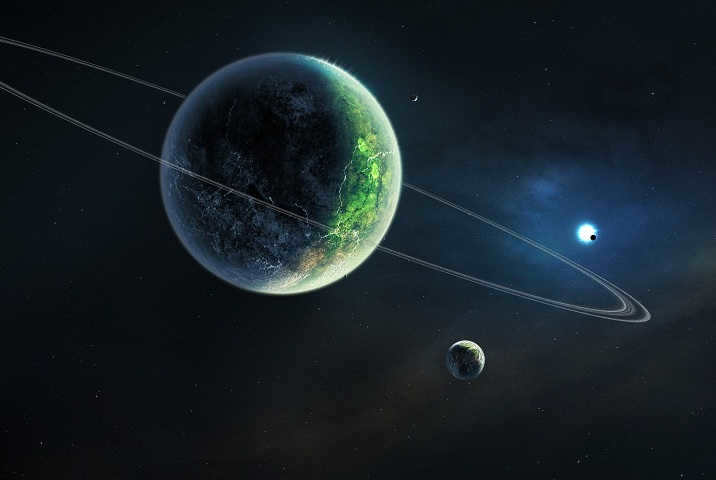
This article aims to explore the concept and essential criteria for a double planet. Additionally, we will ascertain which celestial body can be classified as the sole double planet within our solar system.
The vastness of space has always captivated us with its enigmatic and mysterious nature. Even today, it remains largely unexplored. In this instance, we will delve into the subject of double planets within our solar system. Our objective is to examine this concept and determine whether there truly exist double planets within our galaxy.
What does the term “double planet” mean?
In the field of astronomy, a double planet refers to a binary system where both celestial bodies possess sufficient mass to exert a significant gravitational force. This phenomenon is sometimes referred to as a binary planet.
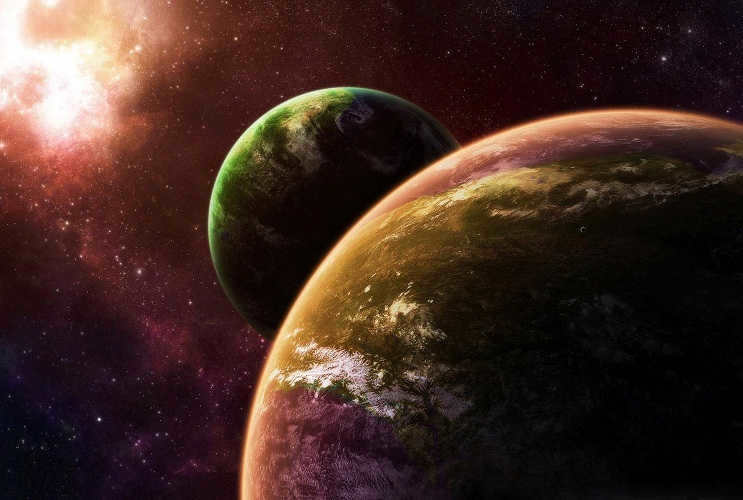
- However, the International Astronomical Union does not recognize this term and it is not included in the official classification. In 2006, a proposal was made to classify the Pluto-Haron system as a double planet, but it was ultimately rejected and Pluto remains classified as a planet.
- In promotional materials for the SMART-1 mission, one of the world’s leading space research centers referred to the Earth-Moon system as a double planet. However, this information is not entirely accurate.
How do scientists define a “double planet”?
Scientists are currently debating the criteria used to differentiate a “double planet” from a “planetary moon system”.
Both bodies must meet the criteria for being classified as a “planet”
- In order for a celestial pair to be considered a double planet, each body must meet the orbit clearance criterion.
- Additionally, they must possess enough gravitational force to orbit the star they are revolving around.
- This requirement is dependent on the mass of the celestial object.
The mass ratio of the objects should be approximately 1/1.
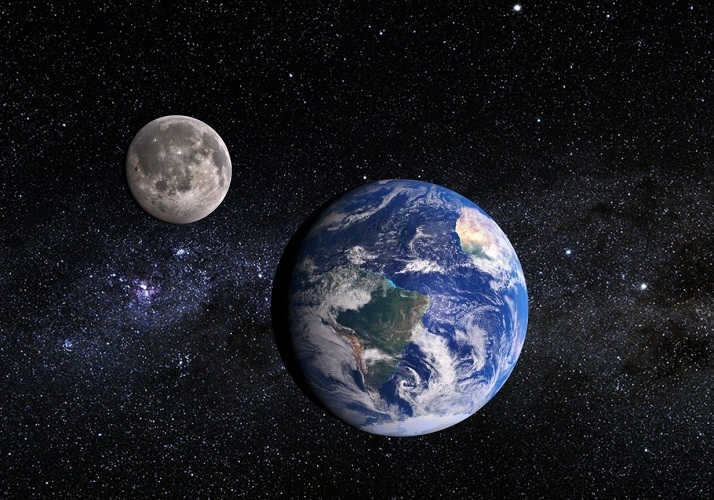
- When determining whether a celestial body is considered a “double planet,” one important factor to consider is the mass ratio of the two bodies. If the mass ratio is 1/1, it indicates that the bodies have nearly equal mass.
- Applying this criterion, it is clear that the moons of Mars, Jupiter, Saturn, Uranus, and Neptune do not qualify as double planets. They all have masses less than 0.00025 (1/4000) of their respective planets. Additionally, some dwarf planets have satellites that are much less massive than the dwarf planets themselves.
- The Pluto-Charon system is a notable exception in the realm of celestial bodies. With a mass ratio of 0.117 (approximately 1/9), Charon and Pluto are often referred to as “double planets” by the scientific community. However, in 2006, the categorization of “double dwarf planets” was assigned to them due to a reevaluation of the definition of “planets”.
- While currently recognized as a companion of Pluto by the International Astronomical Union (IAU), there is a possibility that this categorization may be revisited in the future.
- The Moon’s mass ratio to the Earth is slightly larger, 1/81, which is also remarkably close to 1, in comparison to all other ratios of satellites and their planets. However, from a mathematical perspective, it still leans more towards 2! Although some scientists occasionally place the Earth and its companion into this category. Or maybe this is an indication of a misguided marketing strategy.
Location of the center of mass in a double planet system
- The most commonly proposed solution for a double planet system is to have a barycenter, which is the center of mass, located outside the surface of both bodies. In the case of Pluto and Charon, the center of mass lies outside Pluto, making them a double planet.
- Interestingly, in the Jupiter-Sun system, the center of mass is also located outside the surface of the star. However, it is important to note that calling Jupiter a binary star is not the same as calling Pluto-Charon a binary planet. This is because Jupiter’s low mass and inability to support any type of merger prevent it from being classified as a star or even a brown dwarf.
Formation of double planet systems
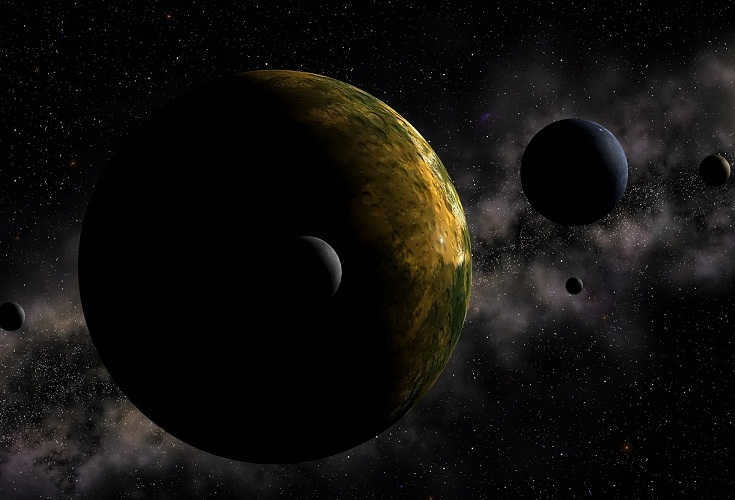
- A final consideration is the manner in which these two entities came together to create a system. It is hypothesized that both the Earth-Moon system and the Pluto-Haron system were formed through the occurrence of massive collisions.
- In each case, one entity was influenced by another, resulting in the formation of a disk of debris and the subsequent creation of two new entities through the process of accretion. There is also a possibility that only one new entity was formed, while the larger entity remained but underwent changes.
- However, it should be noted that a massive collision alone does not necessarily guarantee the classification of both entities as a “double planet”. This is because such collisions can also give rise to small satellites, as seen with Pluto’s four small outer satellites.
- The former hypothesis regarding the Moon’s origin was known as the “double planet hypothesis”. It proposed that the Earth and Moon were formed in close proximity within the protoplanetary disk of the solar system, resulting in a gravitational interaction that led to their formation as a system.
- However, this concept presents a challenge when categorizing two bodies as “double planets” since planets have the ability to “capture” cosmic bodies through gravitational interaction.
- For instance, the moons of Mars (Phobos and Deimos) are believed to be asteroids that were captured by Mars in the distant past. By using such a loose definition, Neptune-Triton would also be considered a double planet. After all, Triton was originally a body of similar size and composition to Pluto, but it was later captured by Neptune.
A concise overview of the unique double planet in our solar system
In the vast expanse of our solar system, one extraordinary object stands out – the enigmatic planet Pluto, which is the only double planet in existence.
- The remarkable images of Pluto were captured by NASA’s space telescope, the ESA Hubble, providing unparalleled clarity and detail. This distant celestial body remains shrouded in mystery.
- Using the state-of-the-art distorted-image camera developed by the European Space Agency, scientists have gained valuable insights into this distant planet. For many years, Pluto was considered the ninth and final genuine planet, until recent re-definitions.
- Intriguingly, Pluto remains unexplored by any manned or unmanned spacecraft, making it a truly unique planetary entity.
- Clyde Tombaugh, the renowned American astronomer, discovered Pluto almost 90 years ago in 1930. Tombaugh’s discovery was a result of his search for the cause of irregularities observed in the orbits of Uranus and Neptune, leading to the identification of this peculiar celestial body.
- Pluto’s orbit differs from the orbits of other planets in the solar system in that it is tilted and more elliptical. Additionally, Pluto’s rotation is unique as its North Pole is positioned below the plane of our star system, rotating in the opposite direction of Earth and the other planets. In terms of size, Pluto is smaller than our Moon but denser than its neighboring planets in the Solar System, when considering the ratio to body mass.
- However, the most remarkable aspect of Pluto, discovered exactly 40 years ago in 1978, is its enormous satellite named Charon. This massive satellite, which has been observed in ground-based photographs, is roughly half the size of Pluto. This makes Charon the largest satellite relative to its planet in the entire solar system.
- Due to this unique characteristic, Pluto is commonly referred to as a binary planet. The Pluto-Charon system completes one rotation in just 6 days. Currently, Pluto is at its closest point to Earth as it travels along its 249-year orbit around the sun. The distance between Pluto and Earth is approximately 4.5 billion kilometers. This proximity allows scientists to gather high-resolution satellite images of Pluto and Charon for research purposes.
- An in-depth analysis of the variations in the brightness of these two planets will yield a wealth of information about their surfaces and atmospheres that cannot be gathered from observations on Earth. Additionally, precise measurements of the orbital parameters of the Pluto-Charon system can be obtained, enabling astronomers to determine the individual masses and densities of these objects. This data will provide valuable insights into the origins of Pluto and Charon.
- One possible explanation for the existence of a double planet like Pluto and Charon is that these objects were formed in large numbers in the outer regions of the solar nebula. However, the majority of these “planetary embryos” were either ejected from the inner solar system or assimilated by larger planets.
- Pluto and Charon have a mass ratio of 1/9 (compared to Pluto’s mass), which certainly qualifies them as a double planet. However, Pluto has been reclassified as a dwarf planet, so the designation of “double planet” for this system has also been called into question. It is possible that scientists may change their stance on this in the future.
- Many ordinary people, and even scientists, believe that the Earth and the Moon are also considered double planets because they are 1/81th the mass of the Earth. However, there is currently no evidence or official theories to support this claim that the Moon is not just a satellite of Earth, but a planet in its own right.
- Indeed, the definition of a double planet only has tentative requirements and criteria. It is possible that in the future, with the discovery of extrasolar planets that have similar-sized satellites or moons, the term “double planet” will be more precisely defined. But for now, it remains an unofficial designation.
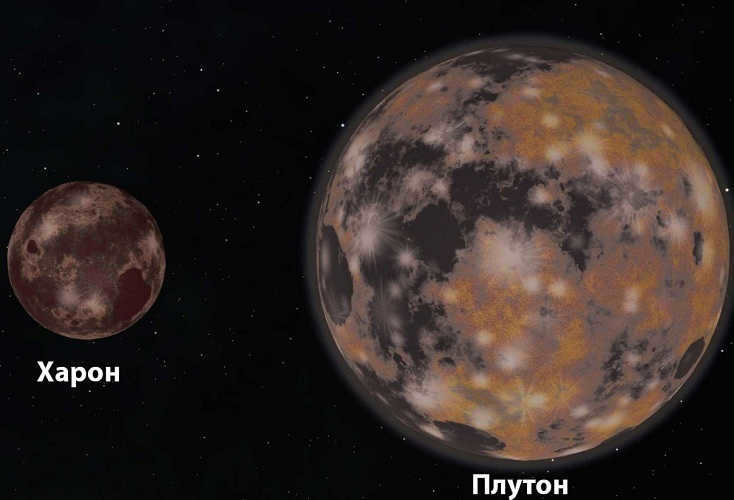
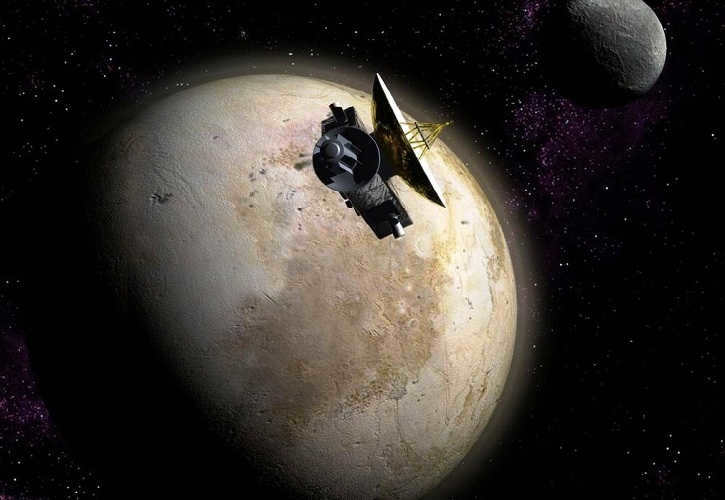
We can reach a final conclusion
In theory, if there is a binary system with one component being 1% larger than the other, we would still classify them as a “planet” and a “satellite”. This is especially true since there is no specific minimum requirement for the size difference between the two bodies in order for the system to be considered a “double planet”.





